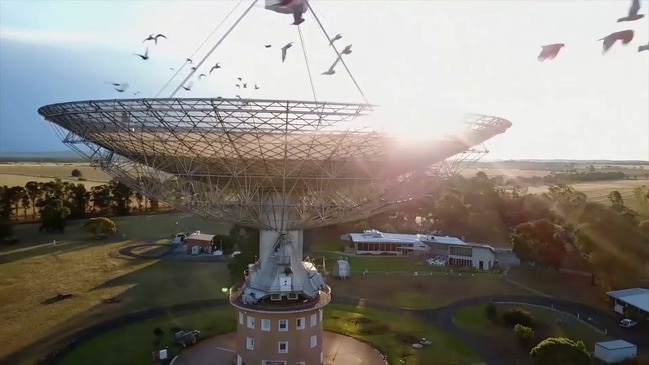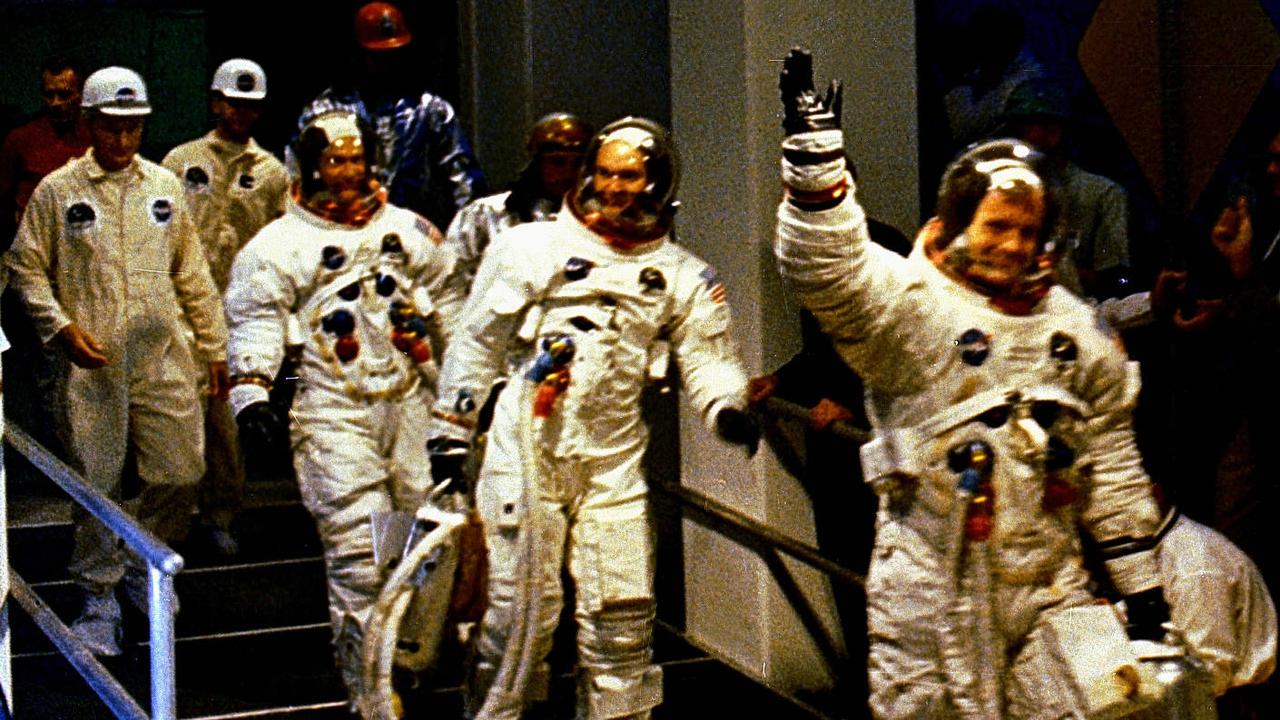Australia remembers the moon landing fifty years on
The footprint is still there in the moon dust but did the first lunar landing live up to expectations? writes Michael Madigan

THE footprint is still there apparently — a giant space boot cratered into the powdery surface by Neil Armstrong as he took the first step on the moon half a century ago.
The world is gearing up to mark the 50th anniversary of the moon landing of July 20, 1969, looking back perhaps a little wistfully to a more optimistic time when Armstrong and Buzz Aldrin bounced jovially around the Sea of Tranquillity, and the stars were by no means the limit.
With just five weeks to go, Krispy Kreme are preparing a new cream filled doughnut to mark the half century mark, the Australian Mint has a new collectable coin series prepared and the folks at NASA even have a special logo made up to provide an official signature to celebratory events surrounding the extraordinary event.

How Australians will mark this other-worldly anniversary is largely up to them.
Those of us who witnessed it can be reasonably certain that, regardless of how long we live, we will never again gaze at anything “commensurate to our own capacity for wonder”.
Millions of Australians watched the flickering images on black and white televisions around the country as kids, including myself, were sent home from school to witness what was, without being in any way hyperbolic, one of the most historic moments in human evolution.
Rather than being overawed by a sense of history I quite distinctly remember wondering what all the fuss was about as I sat on the lounge room floor in our tiny farm house in the sugar cane fields of the Pioneer Valley west of Mackay, gazing dutifully at a bland moon scape which possessed none of the allure of a cartoon.
But, thrilled to escaped the tedium of the nearby one-room school house, I feigned interest until my father, sitting behind me, casually leaned forward and suggested that the moon might “blow up’’ when Armstrong’s boot hit the surface.

It was, looking back, a deliberate tactic by dad who was well aware of the fascination I had for the dramatic imagery furnished by the dynamite he occasionally used to remove tree stumps on the farm.
He wanted me to focus my total attention on a historic event which he knew I would retain in my memory to the end of my days.
And focus I did, participating in a strange sort of global harmonic convergence as up to 530 million other souls across the world did exactly the same thing as I, at precisely the same moment.
I watched the trajectory of that space boot down the ladder of the space module with intense interest.
The phrase Armstrong uttered as he planted his boot in the moon dust, “that’s one small step for man, one giant leap for mankind,” while perhaps not as enthralling as a lunar explosion, struck my six-year-old mind as deeply profound.

In January 1970, tiny fragments of moon rock embedded in a glass bubble — a moon souvenir reminiscent of a still-life snow globe — was presented to Australia as a gift from the United States, handed to then Prime Minister John Gorton by former NASA astronaut Colonel Thomas Stafford in a ceremony at Old Parliament House.
The National Archives of Australia will have it on display at their 50th anniversary exhibition.
The “snow globe’’ somehow seems appropriate — a kitsch souvenir from a lunar holiday that didn’t really live up to expectations.
The world does still look to the stars.
Queensland’s State Development Minister Cameron Dick only late last year pressed the launch button for the first sub-orbital rocket launch in the country carrying a commercial payload.

NASA has also updated its budget request with a view to revisiting the moon by 2024, this time putting a man and a woman on the moon’s surface in a sort of lunar re-run of the old biblical creation story.
Yet many ageing Australians recalling that brief burst of optimism at the end of the 60s, the sense of global unity transcending nationality and ethnicity that the moon landing represented, might well feel a slight sense of disappointment that a new age of unity didn’t quite “take off’’ with the enthusiasm of Apollo 11.
Yet we can be reassured that lunar footprint remains, with no wind or rain to wash it away, a far more profound relic than a doughnut or snow globe to commemorate the infinite intelligence, courage and creativity of the human spirit.
Originally published as Australia remembers the moon landing fifty years on


